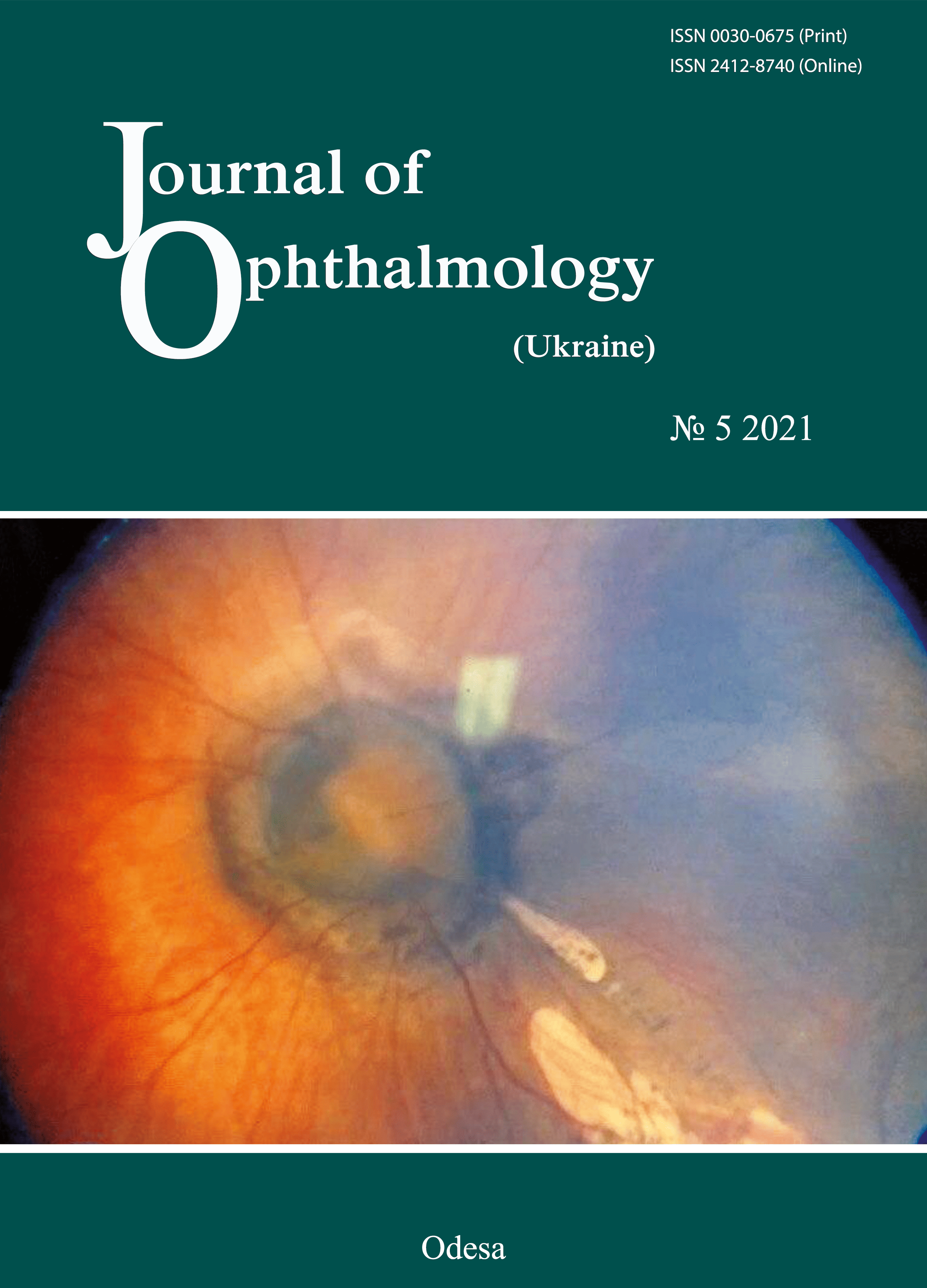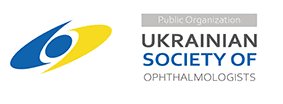Monitoring MMP-2 and MMP-7 levels in traumatic wounds of the ocular adnexa
DOI:
https://doi.org/10.31288/oftalmolzh202151013Keywords:
MMP-2, MMP-9, traumatic wounds, wound healing, ocular adnexa, ELISAAbstract
Background: Matrix metalloproteinase (MMP)-2 and MMP-9 are gelatinases involved in many physiological and pathological processes including inflammation and angiogenesis, which make up the basis for tissue remodeling and repair. Prolonged inflammation and delay in healing of traumatic wounds result in postoperative cicatricial deformities. MMP-2 and MMP-9 activity monitoring might be a biomarker for healing of traumatic ocular adnexal wounds.
Purpose: The purpose of the study was to assess MMP-2 and -9 levels in tissues in traumatic ocular adnexal wounds at various times after trauma.
Material and Methods: We examined 60 patients presenting with traumatic ocular adnexal wounds one hour to three months after trauma. Tissue biopsy was obtained during surgical debridement of wounds and frozen. The main study group included samples of traumatized ocular adnexal tissue, and the control group, samples of healthy ocular adnexal tissue obtained during blepharoplasty. The levels of MMP-2 and MMP-9 were assessed by enzyme-linked immunoassay (ELISA). The absorbance of each well was read at a wavelength of 450 nm with a Multiskan FC plate reader, and the mean absorbance was calculated for each reference standard and sample. Samples of patients presenting with traumatic ocular adnexal wounds one hour to three months after trauma were compared with controls with regard to optical density.
Results: MMP-2 and MMP-9 levels were higher in biopsy samples from traumatic wounds than in control samples. ELISA analysis found that the peak MMP-2 expression was observed at day 3 after trauma, and was 85% above the level in control samples. From day 7 to day 15, this early peak fell to a level close to (15% higher than) that of day 1. From day 15 to day 21, there was a 35 percent increase in MMP-2 expression. MMP-9 expression levels were significantly higher than MMP-2 expression levels. The peak MMP-9 expression was observed at day 4 after trauma, and was 155% above the level in control samples. From day 4 to day 7, MMP-9 expression decreased to a level 85% above the level in control samples. Thereafter, MMP-9 expression increased again to a level 100% above the level in control samples from day 8 to day 15, and gradually decreased from day 15 to day 21.
Conclusion: Our study of MMP-2 and -9 levels in tissues in traumatic ocular adnexal wounds at various times after trauma demonstrated that the peak MMP-2 expression was observed at day 3, and the peak MMP-9 expression, at day 4 after trauma. The levels of both enzymes decreased at day 7, and varied thereafter. By day 21, MMP-2 and MMP-9 levels in samples taken from the wound were as low as the levels in control samples.
References
1.Petrenko OV. [Clinical features and treatment of post-traumatic ocular adnexal defects]. Archive of Ukrainian ophthalmology. 2015;3(2):38-43. Ukrainian.
2.Petrenko OV, Bezrodnyi BG, Tykhomyrov AO. [Monitoring the course of wound process in pyogenic wounds]. Khirurgiia Ukrainy. 2014;2:65-9. Ukrainian.
3.Le NT. The dual personalities of matrix metalloproteinases in inflammation. Front Biosci. 2007 Jan 1;12:1475-87. https://doi.org/10.2741/2161
4.Rohani MG, Parks WC. Matrix remodeling by MMPs during wound repair. Matrix Biol. 2015. May-Jul 2015;44-46:113-21.https://doi.org/10.1016/j.matbio.2015.03.002
5.Petrenko OM, Tykhomyrov AO, Petrenko OV. [Changes in matrix metalloproteinase activity in chronic soft tissue wounds in diabetics treated with vacuum therapy]. Klinychna khirurgiia. 2016;6:58-60. Ukrainian.
6.Sokolov VA, Likhvantseva VG, Levanova ON, Nikiforov AA, Vygodin VA. [Matrix metalloproteinase expression in the tear fluid and complement factor H gene polymorphism in patients with open-angle glaucoma]. Meditsinskaia immunologiia. 2017;19(5):547-56. Russian.https://doi.org/10.15789/1563-0625-2017-5-547-556
7.Chamanga E. Effectively managing wound exudate. Br J Commun Nurs. 2015 Sep;Suppl Wound Care:S8, S10. https://doi.org/10.12968/bjcn.2015.20.Sup9.S8
8.Nagase H, Visse R, Murphy G. Structure and function of matrix metalloproteinases and TIMPs. Cardiovascular Research. 2006 Feb 15;69(3):562-73. https://doi.org/10.1016/j.cardiores.2005.12.002
Downloads
Published
How to Cite
Issue
Section
License
Copyright (c) 2025 О. В. Петренко , М. М. Дранко , В. В. Корниенко , Л. В. Грицай

This work is licensed under a Creative Commons Attribution 4.0 International License.
This work is licensed under a Creative Commons Attribution 4.0 International (CC BY 4.0) that allows users to read, download, copy, distribute, print, search, or link to the full texts of the articles, or use them for any other lawful purpose, without asking prior permission from the publisher or the author as long as they cite the source.
COPYRIGHT NOTICE
Authors who publish in this journal agree to the following terms:
- Authors hold copyright immediately after publication of their works and retain publishing rights without any restrictions.
- The copyright commencement date complies the publication date of the issue, where the article is included in.
DEPOSIT POLICY
- Authors are permitted and encouraged to post their work online (e.g., in institutional repositories or on their website) during the editorial process, as it can lead to productive exchanges, as well as earlier and greater citation of published work.
- Authors are able to enter into separate, additional contractual arrangements for the non-exclusive distribution of the journal's published version of the work with an acknowledgement of its initial publication in this journal.
- Post-print (post-refereeing manuscript version) and publisher's PDF-version self-archiving is allowed.
- Archiving the pre-print (pre-refereeing manuscript version) not allowed.












